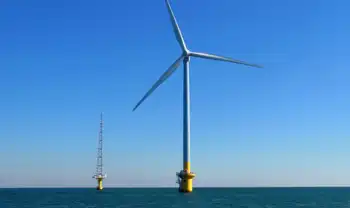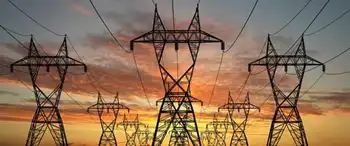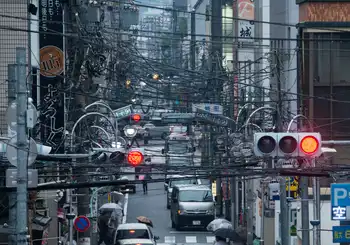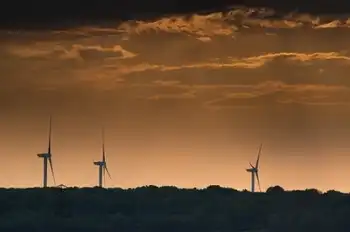New technologies may grab carbon out of the air
This is different from trapping carbon dioxide as it comes out of pollution sources like factories and power plants. This so-called air capture technology could be set up anywhere and suck carbon directly from the atmosphere.
The devices to do this are varied in appearance. Some look a bit like telescopes, others involve vast, thin wall-like structures to capture the carbon. But all aim for a net reduction in atmospheric carbon, instead of just slowing down the increase of greenhouse emissions.
Because air capture need not be near carbon-belching factories, it could help the world's poorest countries, which at this point cannot benefit from the global carbon market, in which companies in developed countries get credits for investing in carbon-limiting projects in poor countries.
Chemicals giant BASF and glass and ceramics firm Corning are working with a team at Columbia University in New York on a company called Global Thermostat that is investigating this technology. Global Research Technologies in Tucson, Arizona, and David Keith at the University of Calgary in Alberta, Canada are also looking into it.
To Peter Eisenberger of Columbia University, a physicist and earth scientist who formerly worked for Exxon Mobil, air capture is a logical way to manage the amount of carbon in the atmosphere.
"You put crap into the atmosphere, you take it out," Eisenberger said in a telephone interview. So far, he said, humans have done little to "clean up our mess... which of course is why (carbon) concentration in the atmosphere is increasing."
As global greenhouse gas emissions increase, carbon gets more concentrated in the atmosphere, the planet gets warmer overall and the most dangerous effects of climate change — floods, droughts, rising seas — get more likely.
Right now, there are about 390 carbon dioxide molecules in the atmosphere for every million molecules of air. Many environmental activists and experts, including former U.S. Vice President Al Gore and the head of the U.N. Intergovernmental Panel on Climate Change, figure that to avoid the worst impacts of climate change, the number should not exceed 350 parts per million.
That kind of reduction could happen if air capture technology becomes widespread, said Columbia University economist Graciela Chichilnisky, who is working with Eisenberger, financier Edgar Bronfman, BASF and Corning.
Chichilnisky defines negative carbon as any technological process that decreases the net carbon concentration in the atmosphere. She said negative carbon technology, such as air capture, is essential "because we procrastinated too long — carbon by physical properties remains in the atmosphere once emitted for... at least 100 years."
Excess carbon has been entering the atmosphere due to the burning of fossil fuels and other causes. Even if new power plants and factories are carbon neutral — not adding any carbon to the air — existing plants continue to spew gigatons of the greenhouse gas into the atmosphere, she said.
An advantage of air capture of carbon is that it would let less-developed countries in Africa and Latin America get into the carbon market as set up under the Kyoto Protocol, Chichilnisky said.
The primary carbon market lets industrialized countries invest in U.N.-approved emissions-cutting projects in developing countries instead of more expensive emissions reductions at home.
Fast-developing countries like China and India have the advantage in this system. The more emissions they have to clean up, the more investment they can attract. But countries with low emissions, like many in Africa and Latin America, have little to sell on this market.
However, Chichilnisky said if these less-developed countries got air capture technology, powered by renewable energy such as solar or wind, they could help bring about a net decrease in the concentration of atmospheric carbon.
Related News

Japanese utilities buy into vast offshore wind farm in UK
TOKYO - Two of Japan's biggest power companies will buy around 40% of a German-owned developer of offshore wind farms in the U.K., seeking to learn from Britain's lead in this sector and bring the know-how back home.
Tokyo-based Electric Power Development, better known as J-Power, will join Osaka regional utility Kansai Electric Power in investing in a unit of Germany's Innogy.
The deal, estimated to be worth around $900 million, will give J-Power a 25% stake and Kansai Electric a roughly 16% share. It will mark the first investment in an offshore wind project by Japanese power companies.
Innogy plans to start…





